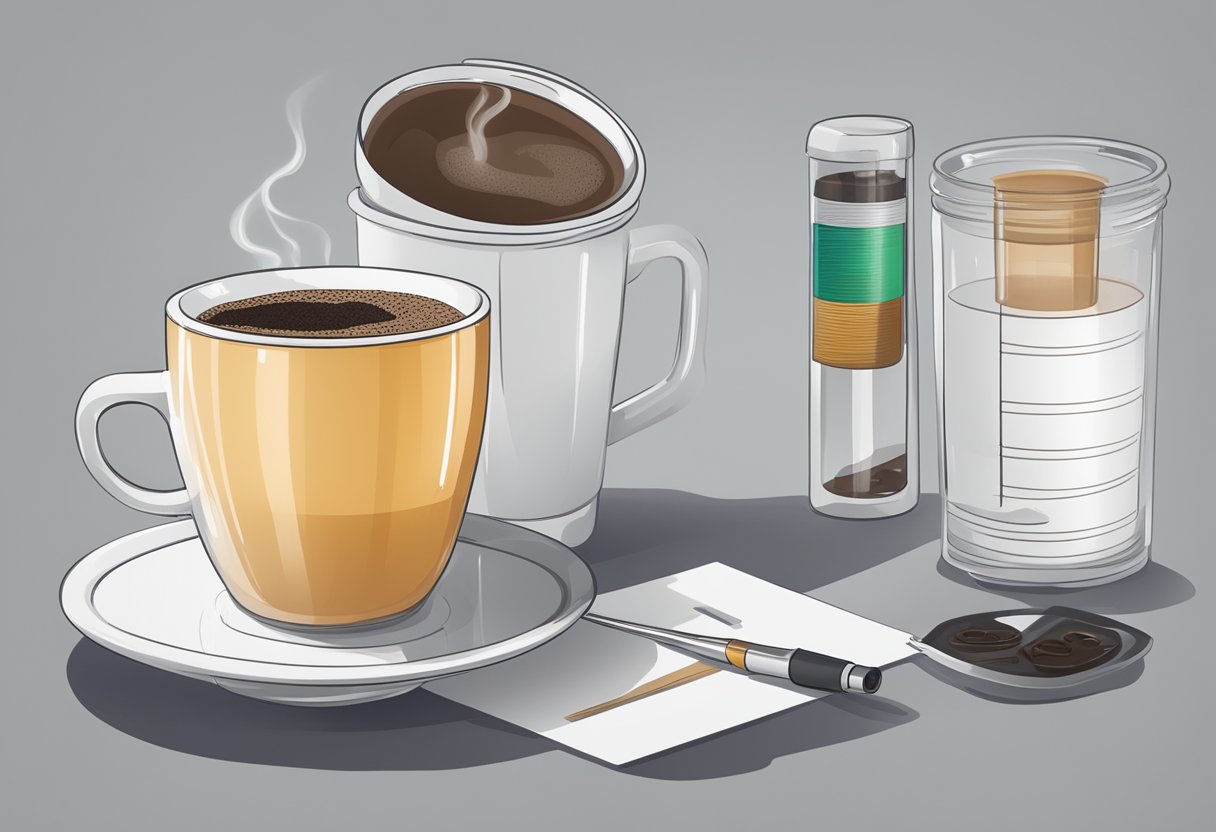1-800-982-4730
1-800-982-4730
Coffee is a popular beverage that is enjoyed by millions of people around the world. However, there have been concerns about whether coffee contains lead, a toxic heavy metal that can be harmful to human health. While coffee has many health benefits, it is important to understand the risks associated with consuming it and to ensure that it is consumed in moderate amounts.

According to recent studies, coffee can contain trace amounts of lead. This is because lead can be found in the soil where coffee beans are grown, and can also be introduced during the roasting and packaging process. However, the levels of lead found in coffee are generally very low and are not considered to be a significant health risk when consumed in moderate amounts.
While coffee is generally considered to be safe for consumption, it is important to be aware of the potential risks associated with consuming it. In addition to lead, coffee can also contain other heavy metals and chemicals that can be harmful to human health. To ensure that coffee is consumed in a healthy and safe way, it is recommended that individuals limit their intake and choose high-quality, organic coffee whenever possible.

Lead is a toxic heavy metal that can accumulate in the body over time and cause serious health problems. There has been concern about the presence of lead in coffee, which is a popular beverage consumed by millions of people worldwide. In this section, we will explore whether coffee contains lead and if so, how much.
Studies have shown that coffee can contain trace amounts of lead. The concentration of lead in coffee can vary depending on the type of coffee and the brewing method used. One study found that brewed coffee contained an average of 0.05 micrograms of lead per liter, while instant coffee contained an average of 0.10 micrograms of lead per liter.
Brewed and ground coffee can contain lead due to contamination from the environment or the coffee-making process. Lead can be present in the soil where coffee beans are grown, and it can also be introduced during the roasting and grinding process. However, the levels of lead in brewed and ground coffee are generally very low and do not pose a significant health risk.
When compared to other beverages, coffee has been found to have lower levels of lead. For example, a study found that tea can contain up to 20 times more lead than coffee. However, it is important to note that the levels of lead in any beverage can vary depending on the source and the manufacturing process.
In conclusion, coffee can contain trace amounts of lead, but the levels are generally very low and do not pose a significant health risk. It is important to note that the contaminant limit of detection for lead is very low, and modern detection methods can detect even the smallest amounts of lead. Therefore, coffee manufacturers and regulators are constantly monitoring coffee for contaminants, including lead, to ensure that it is safe for consumption.

Lead is a toxic heavy metal that can cause a range of adverse health effects, even at low levels of exposure. When consumed in large amounts, lead can accumulate in the body and cause damage to the liver, kidneys, and central nervous system. Ingesting lead can also lead to anemia and interfere with the absorption of essential nutrients.
Lead exposure has been linked to an increased risk of chronic diseases, including heart disease, stroke, and cancer. Research has shown that lead exposure can cause oxidative stress, which can lead to cell damage and contribute to the development of chronic diseases.
Lead is known to be neurotoxic, meaning it can damage the central nervous system and affect brain function. Even low levels of lead exposure can cause cognitive impairment, especially in children. Long-term exposure to lead can also lead to behavioral problems, decreased IQ, and other neurological effects.
According to a pilot study, lead in ceramic mugs can leach into coffee and tea. The measured lead concentrations ranged from 0.2 to 8.6 μg/L in coffee and from <0.2 to 1.6 μg/L in tea. While these levels are not considered to be dangerous, it is important to minimize exposure to lead wherever possible.
The EPA has set a maximum contaminant level for lead in drinking water at 0.015 mg/L. While coffee is not a major source of lead exposure, it is important to be aware of potential sources of lead in the diet and take steps to minimize exposure. This can include using lead-free ceramic mugs, avoiding lead-glazed pottery, and using a water filter to reduce lead levels in drinking water.
While coffee has been associated with a range of health benefits, including a reduced risk of type 2 diabetes and liver cancer, it is important to consider the potential health effects of lead exposure. If you are concerned about your lead exposure, talk to your healthcare provider about getting tested for lead levels and taking steps to reduce your exposure.

Coffee is one of the most popular beverages in the world, but concerns have been raised about the presence of lead in coffee. While it is not possible to completely eliminate lead from coffee, various regulations and safety measures have been put in place to minimize the risk of lead exposure.
Health organizations such as the World Health Organization (WHO) and the United States Environmental Protection Agency (EPA) have established guidelines and standards for lead in food and beverages. The WHO has set a maximum limit of 0.01 mg/L for lead in drinking water, while the EPA has set a maximum contaminant level of 15 parts per billion (ppb) for lead in drinking water.
Manufacturers of coffee products are responsible for ensuring that their products meet safety standards and guidelines. They conduct regular quality control checks to ensure that their products are safe for consumption and comply with regulations. They also work closely with regulatory agencies to ensure that their products meet all safety requirements.
The tolerable weekly intake (TWI) of lead for adults has been set at 25 micrograms per kilogram of body weight by the European Food Safety Authority (EFSA). This means that a person weighing 70 kg can safely consume up to 1,750 micrograms of lead per week. The benchmark dose lower confidence limit (BMDL) for chronic daily intake of lead has been set at 1.0 micrograms per kilogram of body weight per day, and the target hazard quotient (THQ) and hazard index (HI) for lead in coffee are both below the unsafe level of 1.0.
In conclusion, while the presence of lead in coffee is a concern, various regulations and safety measures are in place to minimize the risk of lead exposure. Manufacturers of coffee products are responsible for ensuring that their products meet safety standards and guidelines, and consumers can safely consume coffee within recommended limits.

Instant and decaffeinated coffee are often considered as alternatives to regular coffee. However, they still contain lead, although in smaller amounts than regular coffee. According to the FDA, the maximum level of lead allowed in decaffeinated coffee is 5 parts per billion (ppb), while the maximum level of lead allowed in instant coffee is 10 ppb. It is important to note that the lead content in instant and decaffeinated coffee may vary depending on the roasting process and packaging.
Coffee substitutes are gaining popularity as an alternative to coffee. These substitutes are made from grains, roots, and other natural ingredients. Unlike coffee, they do not contain caffeine and are generally considered to be healthier. However, some coffee substitutes may contain lead. For example, cereal coffee may contain lead due to the presence of tin in the packaging. It is important to check the label and ensure that the coffee substitute is free from lead.
Cereal and flavoured coffee drinks are another alternative to regular coffee. These drinks are often marketed as a healthier option and are available in various flavours. However, they may contain lead due to the presence of tin in the packaging. It is important to check the label and ensure that the drink is free from lead.
In conclusion, while coffee alternatives may seem like a healthier option, it is important to be aware of their lead content. Instant and decaffeinated coffee contain lead, albeit in smaller amounts than regular coffee. Coffee substitutes and flavoured coffee drinks may also contain lead due to the presence of tin in the packaging. To minimize the risk of lead accumulation, it is recommended to consume coffee and its alternatives in moderation.